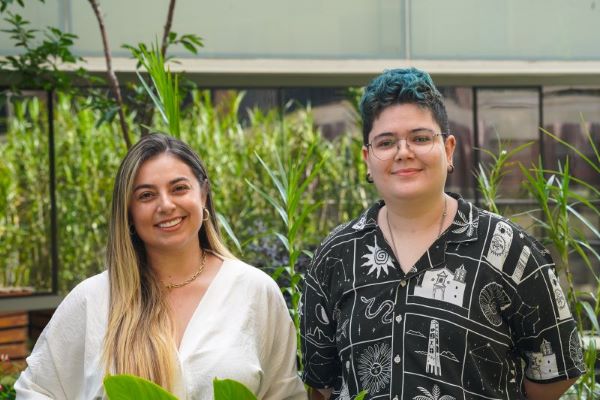Over the past few years, Antioquia, a department located in the northwest region of Colombia with a population of about 6.9 million, has seen an influx of people, not only from other parts of Colombia, but from all over the world.
While this has stimulated economic growth, especially in Medellín, Antioquia’s capital and largest city, it has also introduced challenges such as rising costs and gentrification, with certain neighborhoods becoming less affordable.
Comfama is a nonprofit organization that strives to grow the middle class by providing social and economic services to families. The organization has begun a groundbreaking project in collaboration with the Business Analytics Center (BAC) at the Georgia Tech Scheller College of Business to enhance its ability to forecast and meet the needs of the population.
Determining the Future of Compensation Funds
Comfama is a “compensation fund.” In Colombia, these private, nonprofit organizations have been created to improve the lives of workers and their families. They provide social services for recreation, culture, education, preventive healthcare, housing assistance, loans, and more. There are 42 compensation funds across the country that play a vital part in the country's social security system, according to Santiago García Rivera, head of the Information and Analytics Laboratory at Comfama.
For companies in Colombia, participation in a compensation fund is mandatory. Each fund collects a 4 percent payroll tax from affiliated companies to provide monetary subsidies to workers and their families. "We have about 121 thousand companies affiliated with Comfama, which includes about 1.4 million workers. When you take into account their families, that's around 2.7 million people we serve, plus a large group of non affiliated people that use our services," said García Rivera.
For Comfama, economic and demographic shifts have complicated the prediction of how many people will use its services. "Recognizing these challenges, Comfama is embracing data-driven solutions. We want to build a robust prediction model to help us forecast what will happen to our affiliated population in the future," he said.
The Georgia Tech Connection
This is where Georgia Tech comes in. One of García Rivera's colleagues at Comfama, Juan David Penagos, head of Ventures and New Business Development, knew about the Georgia Tech Enterprise Innovation Institute Medellín Innovation and Entrepreneurship Center and suggested they reach out to see whether they could put a project together with business analytics students. Sara Araujo Santos, managing director of Development for Latin America for the Center, contacted Sherri Von Behren, the BAC's corporate engagement manager, about possibly creating an MBA business analytics practicum project to help Comfama.
Von Behren contacted Jonathan Fan, a faculty member of the Information Technology Management group in the Scheller College. Fan leads students in transforming data into business solutions through the Business Analytics Practicum course, which is offered in the fall for graduate students and in the spring for undergraduates. Fan immediately saw the value of the opportunity for his MBA students and set up a practicum in which they are developing predictive models using time series data and macroeconomic variables.
There are two teams assigned to the project: Team Data Paisa Squad with Aaron Payne, MBA ‘26 (team lead), Lissette Chavez, MBA ‘25, and Boris Taganov, MBA ‘25, and Team The Growth Gurus of Antioquia, with Justin Siegel, MS in Analytics ’25 (team lead), Srinjoy DasMahapatra, MBA ’25, and Vinaya Vinigalla, MBA ’24. Haofei Qin, Ph.D. candiate at Scheller helped mentor students along the way.
 Team Data Paisa Squad: Boris Taganov, Lissette Chavez, and Aaron Payne
Team Data Paisa Squad: Boris Taganov, Lissette Chavez, and Aaron Payne
 Team The Growth Gurus of Antioquia: Haofei Qin (Ph.D. mentor), Justin Siegel, Vinaya Vinigalla, and Srinjoy DasMahapatra
Team The Growth Gurus of Antioquia: Haofei Qin (Ph.D. mentor), Justin Siegel, Vinaya Vinigalla, and Srinjoy DasMahapatra
They meet weekly with the Comfama team, which includes analysts and data scientists Alejandra Bernal, Susanna Londoño, and Wbeimar Ossa. The teams discuss their progress and address any challenges they face that week. With less than two months to go, they're seeing results.
 Alejandra Bernal and Susanna Londoño, Comfama
Alejandra Bernal and Susanna Londoño, Comfama
 Wbeimar Ossa, Comfama
Wbeimar Ossa, Comfama
Fan has been pleased with the results so far. “This cohort was truly outstanding,” he said, speaking of his students. ”They approached complex topics with clarity and creativity, and their collaborative spirit led to innovative ideas and enlightening discussions. They handled challenging subjects effortlessly, always coming up with fresh and interesting perspectives."
Managing the Present and Predicting the Future
Regarding the work of Team Data Paisa Squad, Aaron Payne remarked, "One of our key successes has been developing a model framework that provides accurate forecasts and adapts to changes in external economic indicators. By integrating machine learning techniques alongside traditional time series models, we've increased our forecasts' robustness. Additionally, the collaboration with Comfama's internal team has been highly productive, enabling us to align our technical solutions with their business needs. The early feedback on our findings has been positive."
Payne stated that one of the main challenges they've faced has been combining data from multiple sources, as each source has different levels of detail and accuracy. Ensuring these data sets are consistent and reliable has been difficult, especially for economic factors that may not directly match Comfama's internal data. Another challenge is adapting standard forecasting models like SARIMAX—Seasonal AutoRegressive Integrated Moving Average with eXogenous variables— to account for external influences like government policies or unexpected economic changes.
"This experience has reinforced the value of experiential learning in advancing my business analytics skills. Working with real-world data, especially in a dynamic organization like Comfama, has provided a deeper understanding of how to apply advanced analytical methods to solve practical business problems. The practicum has helped bridge the gap between theory and practice, giving me confidence in using these tools to drive decision-making in real business environments," said Payne.
The practicum is more than just about numbers, though. It's about understanding the lives behind the data points. As Fan reminds his students, "A model is just a model, but those data points represent individual lives. We want to understand the mechanism or the story behind the data."
